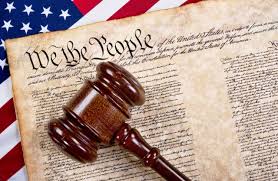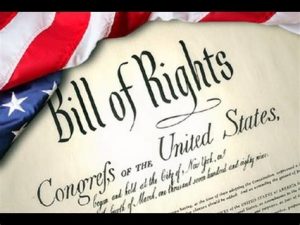Part 1 (of 4) ~ Intro & background information
Direct link to the public letter by the president of the AMA.
 I, faith gibson, am no fan of the American Medical Association (AMA).
I, faith gibson, am no fan of the American Medical Association (AMA).
But I do “approve this message” by the president of the AMA, Dr. Jack Resneck, MD and encourage others to read and distribute it.
Dr. Resneck accurately outlines the disastrous consequences of the US Supreme Court’s reversal of Roe v. Wade that literally destroys lives, dramatically increases the maternal mortality rate (MMR), up-ends civility and endangers our entire democracy.
Equally important, he notes that this is not just a “women’s issue” but is equally also a “men’s issue” as well. Apparently Dr. Resneck understands the “First Cause” of pregnancy is a man or adolescent boy who ejaculates 75 million sperm in the birth canal of a female partner.
Not only does he acknowledge this truism, but he is not afraid to talk about this obvious and very critical fact.
So I’ll say it again for him:
~ Attention Men and Adolescent Boys ~
Don’t ejaculate
in the birth canal
if you don’t want or can’t
raise a baby!
Direct link to public letter by the president of the AMA
The Emperor Has No Clothes!”
So I heartily applaud Dr. Resneck as well as all the other organizations that are speaking up and standing up to this political insanity.
I describe this as “the emperor has no clothes“, in which Supreme Court Justices are deciding cases based on their personal religious beliefs, which is about as unconstitutional as you can get.
They are falsely attributing their decision to the Constitution by pointing to the irrelevant fact that the word “abortion” isn’t in the Constitution, along with hundreds of other words that are used every day in relation to the Constitution and its principles.
If Justice Alito was studying these constitutional principles in high school, and used that answer in a homework assignment or final exam, he would have been given a “d” for dunce.
 The Constitution only has 4,543 words out of the million or so words in daily use in the English language, and only 511 of those words are nouns or other forms of “concept-words”.
The Constitution only has 4,543 words out of the million or so words in daily use in the English language, and only 511 of those words are nouns or other forms of “concept-words”.
Link to the 511 nour in the US Constitution
The purpose of these nouns as constitutional concepts was to first invent and then construct a system of self-governance for approximately four million (best est. 3,929,214) people of many different ethnic, religious, racial and economic backgrounds.
The personal and private rights of individual citizens was not the primary object of that process. The lack of language acknowledging and protecting our rights as individuals is why three of the “founding fathers” initially refused to sign the Constitution until a majority of its members agreed to a “bill of rights” that enumerated individual rights. It was primarily written by James Madison and ratified by all 13 states in 1789.
Here is how it came about as described by Britannica.com:
“Three delegates to the Constitutional Convention, most prominently George Mason, did not sign the U.S. Constitution largely because it lacked a bill of rights.
…. several states ratified it only on the understanding that a bill of rights would be quickly added.
James Madison drew on the Magna Carta, the English Bill of Rights, and Virginia’s Declaration of Rights, mainly written by George Mason, in drafting 19 amendments, which he submitted to the U.S. House of Representatives on June 8, 1789.
The House approved 17 of them and sent it to the U.S. Senate, which approved 12 of them on September 25. Ten were ratified by the states and became law on December 15, 1791.”
<www.britannica.com/topic/Bill-of-Rights-United-States-Constitution>
 The extreme danger of confusing the US Constitution with the Bill of Rights
The extreme danger of confusing the US Constitution with the Bill of Rights
The US Constitution is about the methods and mechanics of self-governance, which in 1787 was did not yet been formulated at a national level.
The writing of a constitution was the process of creating a model for self-governance and then organizing an administrative structure that would support it. The Founding Fathers chose one that had three independent branches and provides for free and fair national elections of the executive branch and all the members of Congress. This was followed the creation of administrative structures running for a democratically-elected federal government by its elected and appointed officials and a bureaucracy of federal employes.
This was no more about the personal level of each individual citizen than an organizational chart for a big corporation or a branch of the US military would determine the schedule of bathroom breaks and vacations.
Based on Justice Alito’s inexplicable theory about the word “abortion”, any word added to the English language since 1787 would have no constitutional “standing”. This would of course include both the noun and verb “Google” and “to google”, as well as internet, paywall, waterboarding, gig-economy, mansplaining, and cryptocurrency.
According to Justice Alito’s reasoning, the Supreme Court could not take a case that related to “cryptocurrency“, since that word also is not in the US Constitution.
Personal sectarian religious beliefs and the legal duties of US Supreme Court Justices to be religiously agnostic
 Franky, it’s not the vocabulary used in the US Constitution, but religion that is the issue in Roe v. Wade’s reversal. At least five, possibly all six of the justices that signed the Dobbs decision — Alito, Roberts, Thomas, Alito, Kavanaugh and Amy Coney Barrett — are all Roman Catholics and Justice Gorsuch was raised as a Catholic, although he currently identifies as an Episcopalian.
Franky, it’s not the vocabulary used in the US Constitution, but religion that is the issue in Roe v. Wade’s reversal. At least five, possibly all six of the justices that signed the Dobbs decision — Alito, Roberts, Thomas, Alito, Kavanaugh and Amy Coney Barrett — are all Roman Catholics and Justice Gorsuch was raised as a Catholic, although he currently identifies as an Episcopalian.
 Statistically, 67% of the Supreme Court Justices are Catholic while only 22% of adult Americans identify as Catholic. {ref: Gallup interviews January 2021 to March 2023} It cannot be just a “coincidence” that lifelong members of a specific organized global religion — i.e. Roman Catholicism — headed by a leader that is officially considered to be spiritually infallible (the pope) and currently considers abortion to be a “mortal sin”, would overturn the law that provided access to safe and legal abortions in the early “pre-viable” weeks of pregnancy.
Statistically, 67% of the Supreme Court Justices are Catholic while only 22% of adult Americans identify as Catholic. {ref: Gallup interviews January 2021 to March 2023} It cannot be just a “coincidence” that lifelong members of a specific organized global religion — i.e. Roman Catholicism — headed by a leader that is officially considered to be spiritually infallible (the pope) and currently considers abortion to be a “mortal sin”, would overturn the law that provided access to safe and legal abortions in the early “pre-viable” weeks of pregnancy.
Historical Catholicism is not what most people think
Most people assume that the Catholic Church’s position on abortion — i.e. banned under all circumstance — has been its theological position ever since it was first founded more than 2000 years ago in the year 3 AD/CE.
However, the actual facts are very different. The Church’s modern, which is to say absolutist, position is only a 144 years old. That is less than 10% of time this historical religion has been in existence. In other words, for 90% of all Catholics — parishioners, priests, bishops, and pope — did not believe that abortion equated to ‘murder’.
Originally, the Church did not have any formal “position” on abortion, with such matters being left to the conscious of each parishioner and the counsel of the local priest.
Catholic teaching was that no homicide was involved if abortion took place before the fetus was infused with a soul. This was generally believed to occur at “quickening“, when the mother began to feel the baby move, which is 18 to 22 weeks for most mothers.
Then in 1591, Pope Gregory XIV banned all abortive efforts after 166 days of pregnancy or about 24 weeks. Biologically, this time-frame perfectly correlates with the stage of viability for a fetus — its ability to live separately from its mother’s body. That is still the current legal limit for abortion in the UK.
 Then in 1869, Pope Pius IX declared abortion at any stage of pregnancy to result excommunication from the Church. Since then, there has been no change in the Catholic Church’s theological position. Reference on hx of Catholic teaching & abortion:
Then in 1869, Pope Pius IX declared abortion at any stage of pregnancy to result excommunication from the Church. Since then, there has been no change in the Catholic Church’s theological position. Reference on hx of Catholic teaching & abortion:
Agnosticism ~ the obligation of all Americans, including US Supreme Court Justices, is to reframe from judging US law by their personal sectarian religious beliefs
The obligation of all Americans, including US Supreme Court Justices but applying to 100% of the rest of us, to be religious agnostic when it comes to interpreting state, federal and local laws. The only exception is the right to peacefully protest a law as part of political protest for obvious purpose of having a particular statute reexamined in the hope of it being appropriately changed by state, federal or local legislators.
The formal role of agnosticism in a democracy
While I personally am not a Roman Catholic, I also NOT “anti-Catholic“, or anti- any other formal religious tradition, nor do I think that others should be making decision for other people based on their own personal religious beliefs.
The changing record of Catholic Church’s teachings on pre-viable termination of pregnancy over the last 2,000 years, and each of us as individuals, as well as the social, cultural and legal relationship with early, pre-viable abortions, makes it plan that human beings have an extraordinarily wide range of very different and often changing beliefs, both religious and secular, about the political, religious and legal issue of abortion .
So far, America has been a democratic republic for 247 years. WE have functioned under the US Constitution for 236 years. So far we have never been a theocracy, and last time I checked tuned into a cable news channel, we still were a democracy.
I and millions of other American believe the best person to make the final decision about early, pre-viable abortion is not the pope, US Supreme Court justices, American politicians, state or federal government officials or bureaucrats.
The only person who can actually decide whether or not she is willing and able to safely carry a pregnancy to term and give birth is the childbearing woman herself.
Saved links for future reference ~ https://www.irishtimes.com/news/social-affairs/religion-and-beliefs/catholic-church-teaching-on-abortion-dates-from-1869-1.1449517

